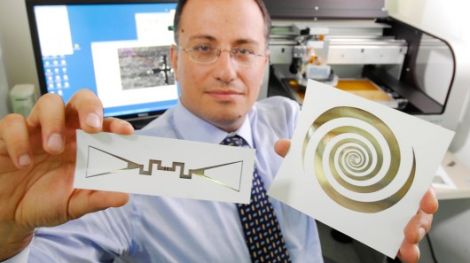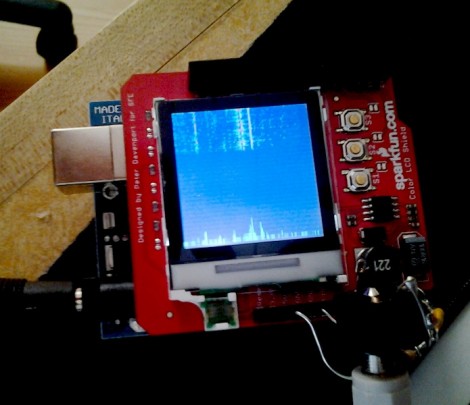
At this very moment, unseen radio waves are bouncing off almost everything that surrounds you. Emitted by everything from radio and TV stations to cell phone networks and satellites, these waves are full of unharnessed energy. That is, until now. Researchers at the Georgia Tech School of Electrical and Computer Engineering have been working diligently to harness this unused energy, and recently unveiled their new antenna technology at the IEEE Antennas and Propagation Symposium.
The team, led by professor [Manos Tentzeris] has been working to develop ultra-wideband antennas to tap into the energy all around us. Using printers filled with a specially-formulated ink compound, they have been able to print these antennas on paper and polymer substrates. The antennas can harness energy stored in radio frequencies ranging from 100 MHz all the way up to 60 GHz, depending on the printing medium.
The team can currently power temperature sensors using television signals, and is preparing a demo in which they will power a microcontroller simply by holding it up in the air. The technology is still in its infancy, but the list of applications is almost endless. We doubt you’ll be powering your TV with this technology any time soon, but it definitely holds promise for things such as wireless sensor mesh networks and the like.
[Thanks, morganism]











